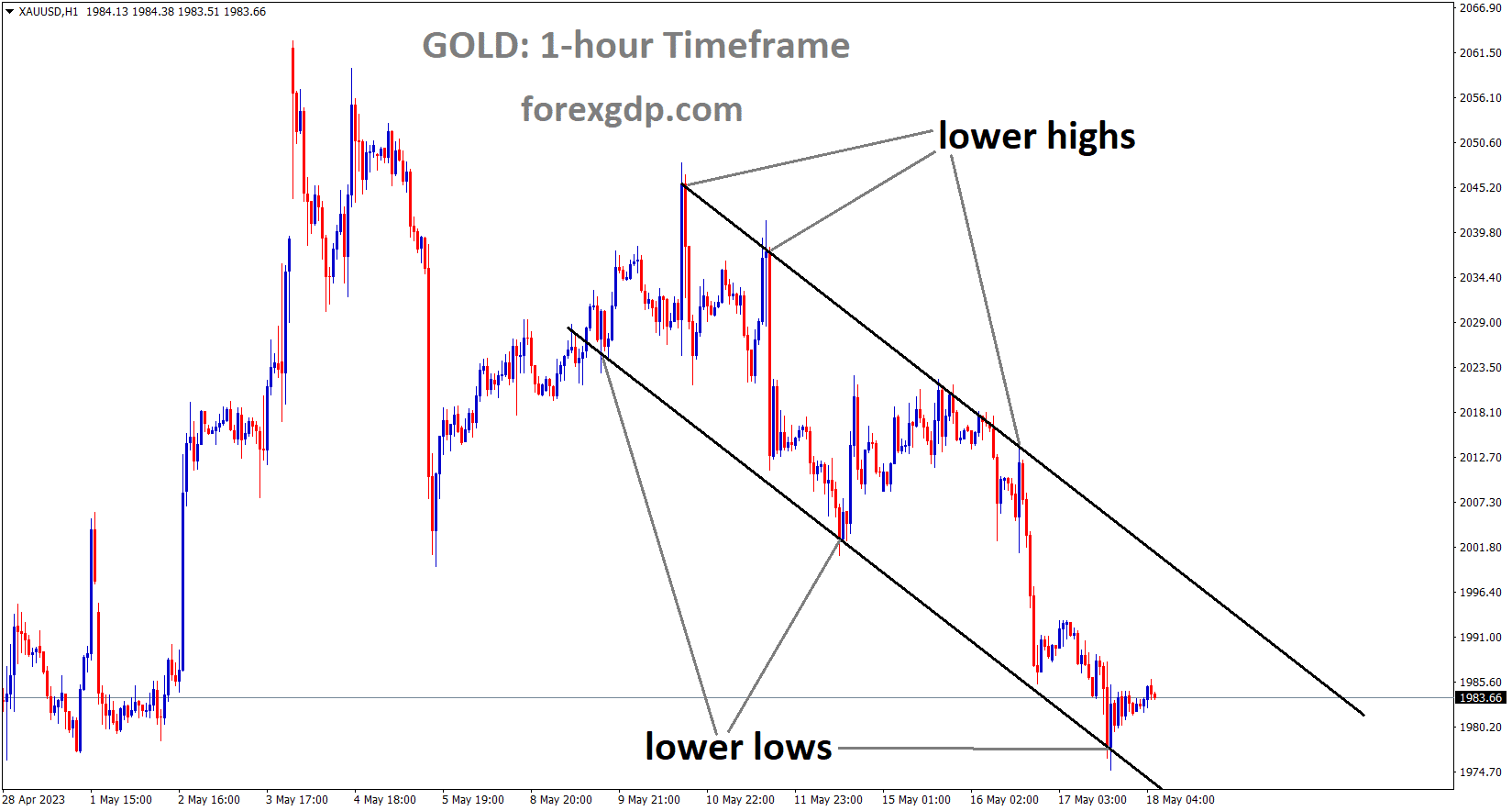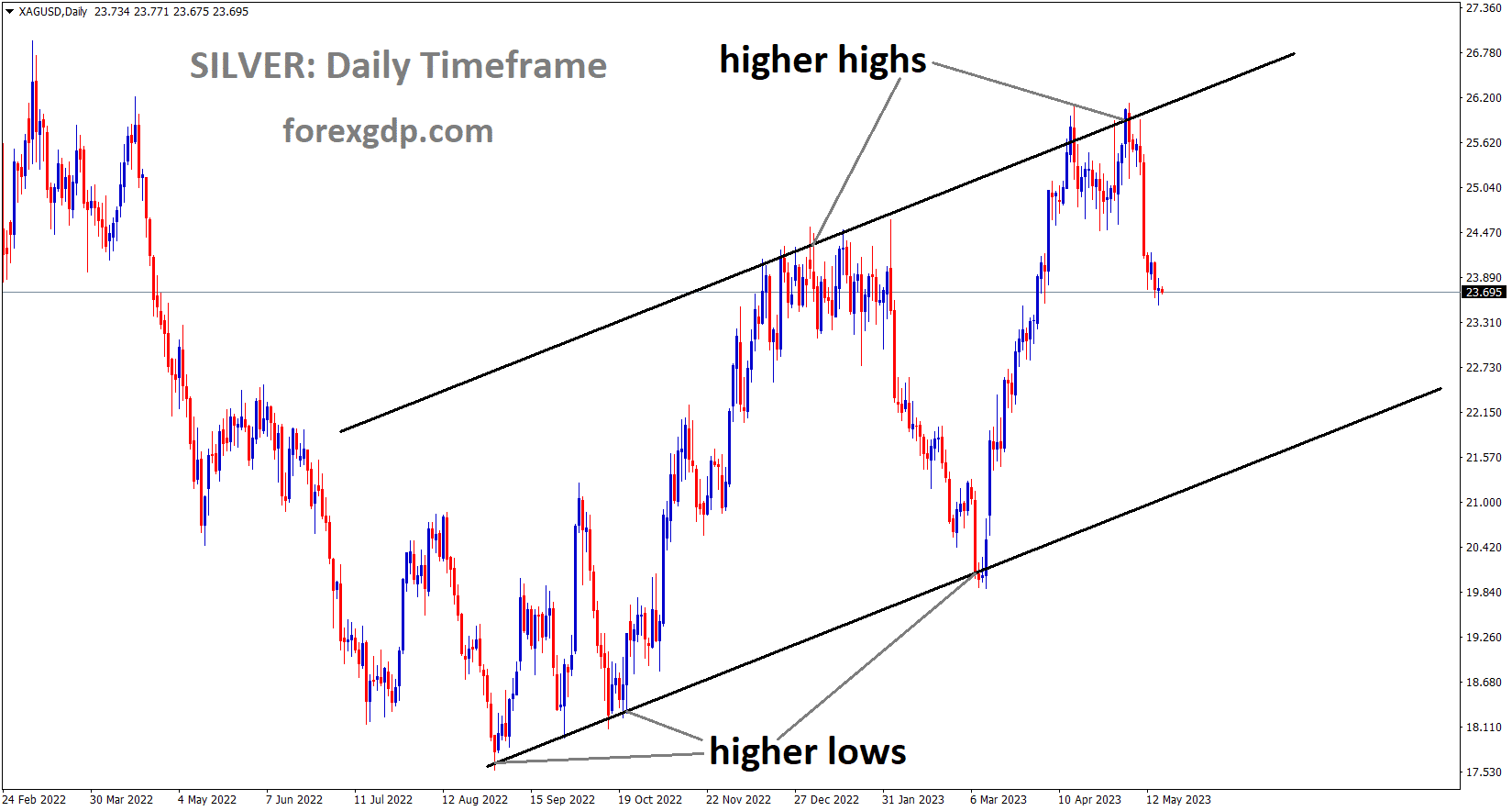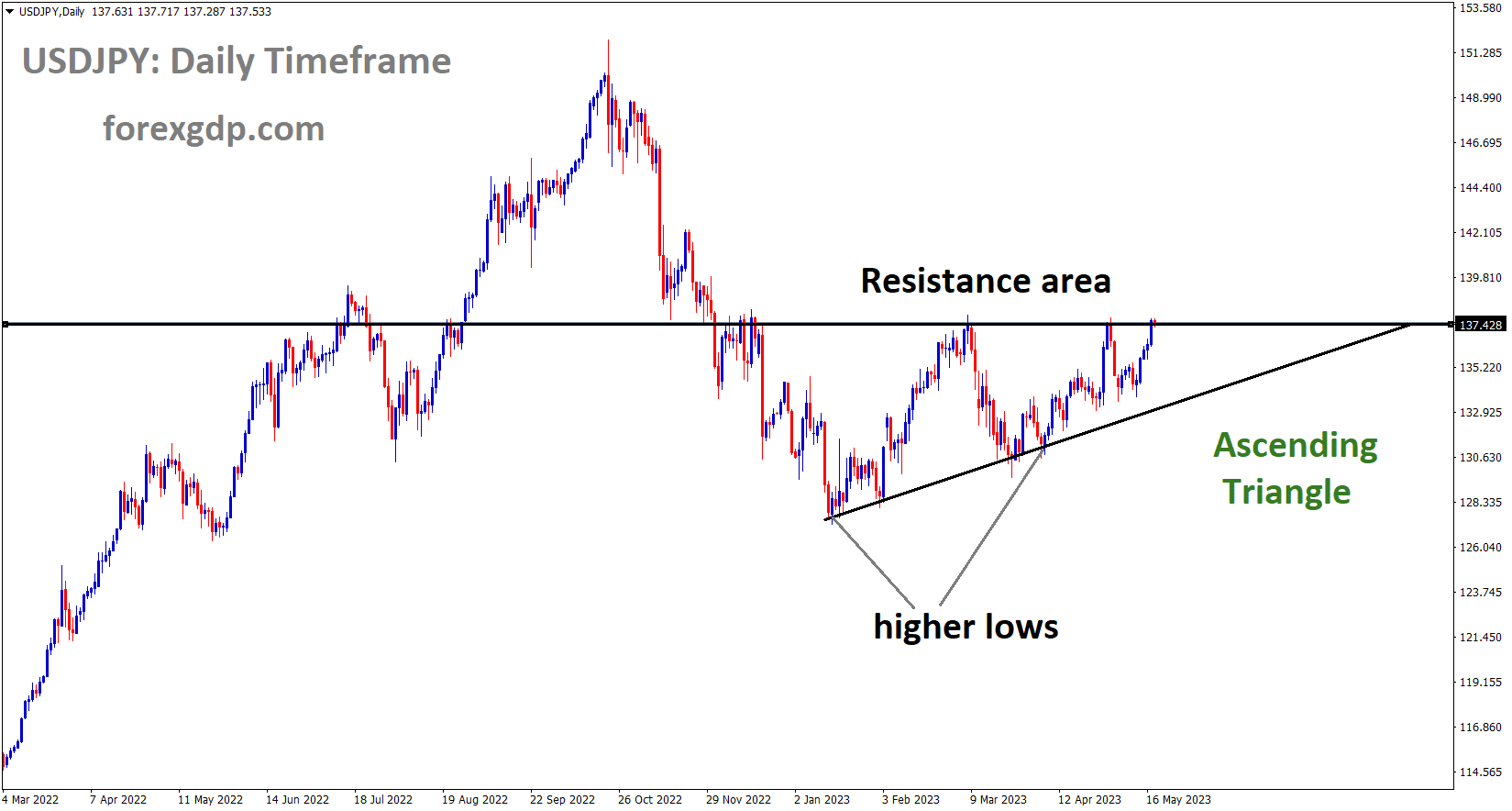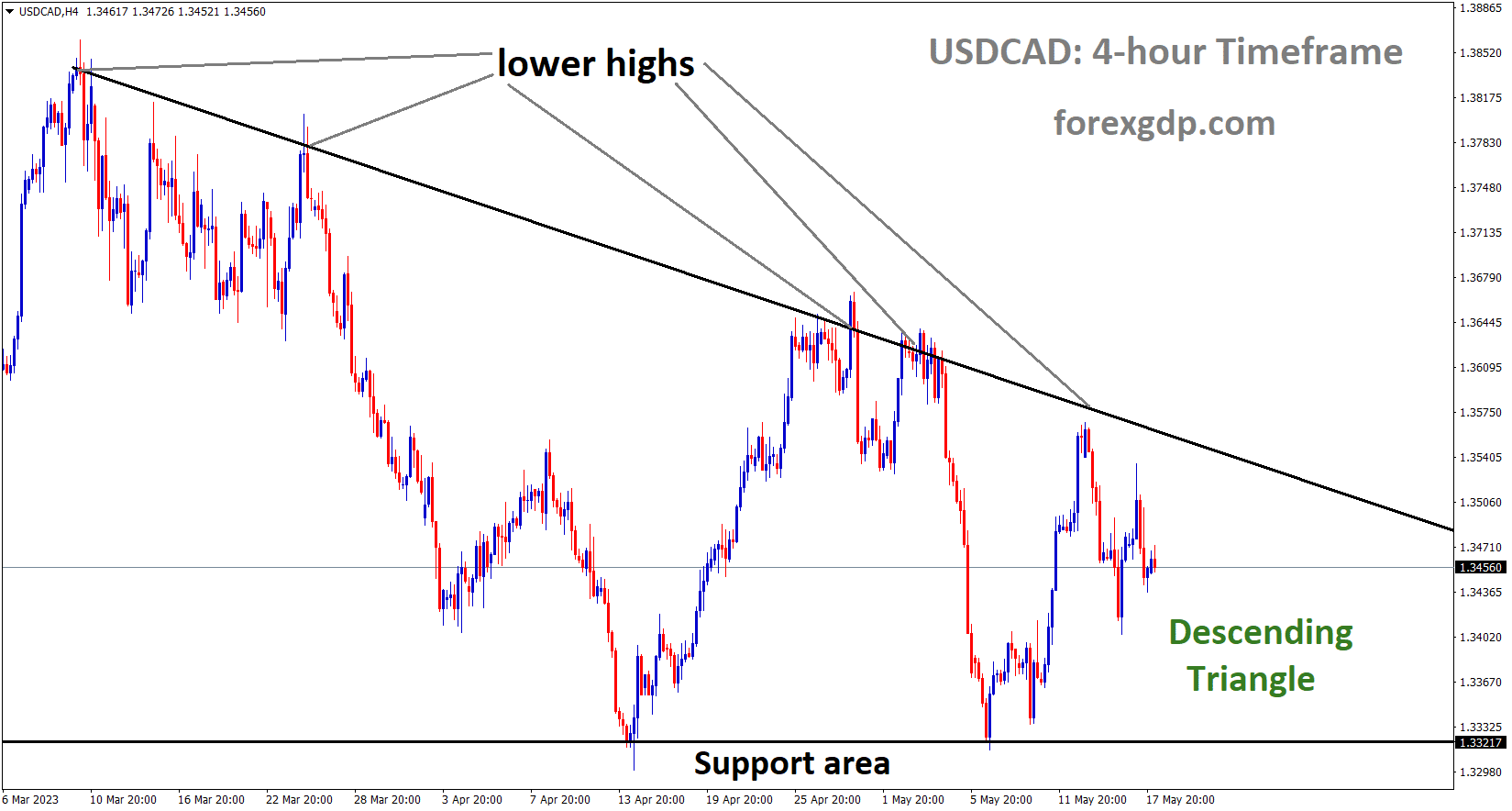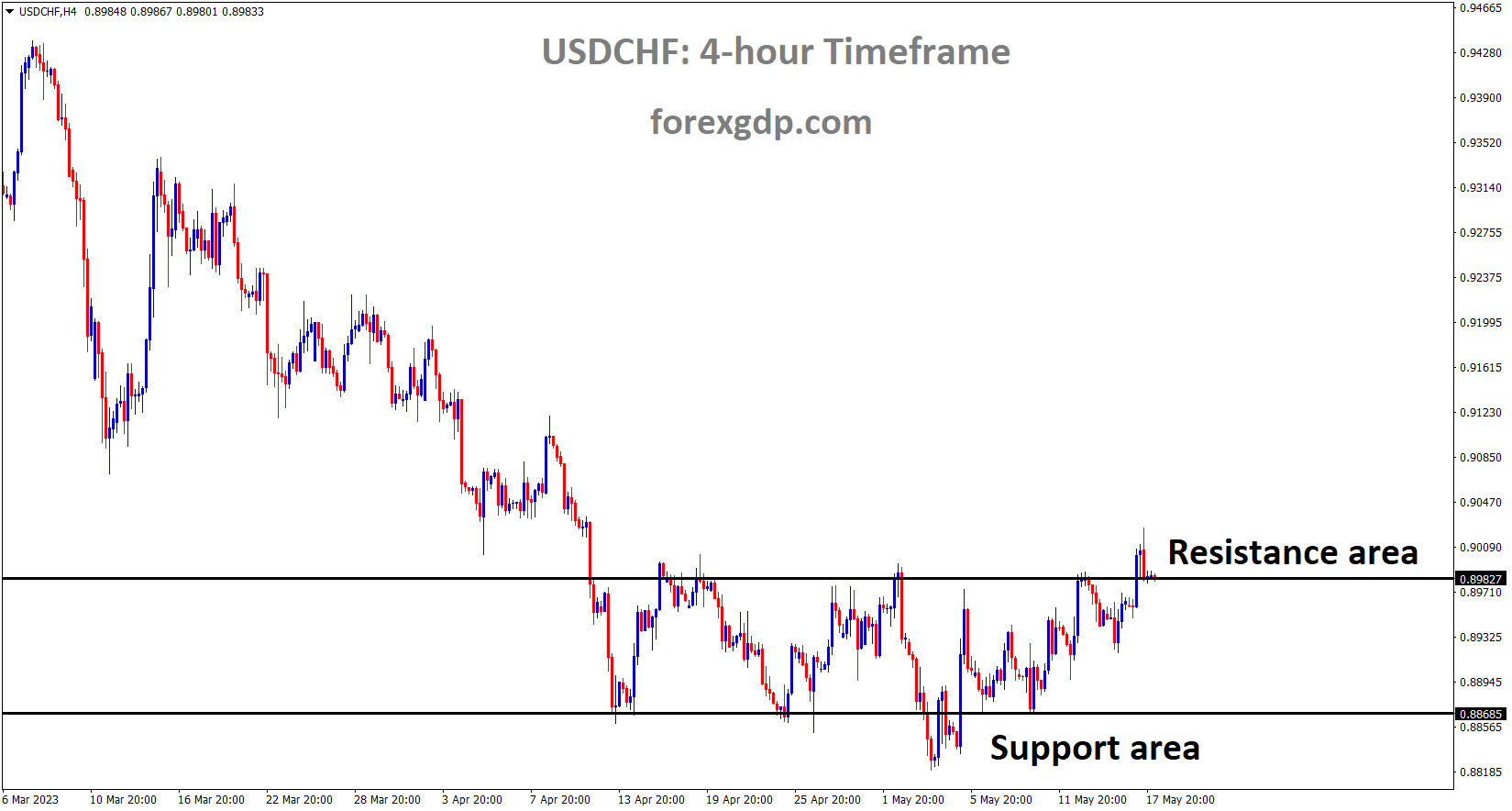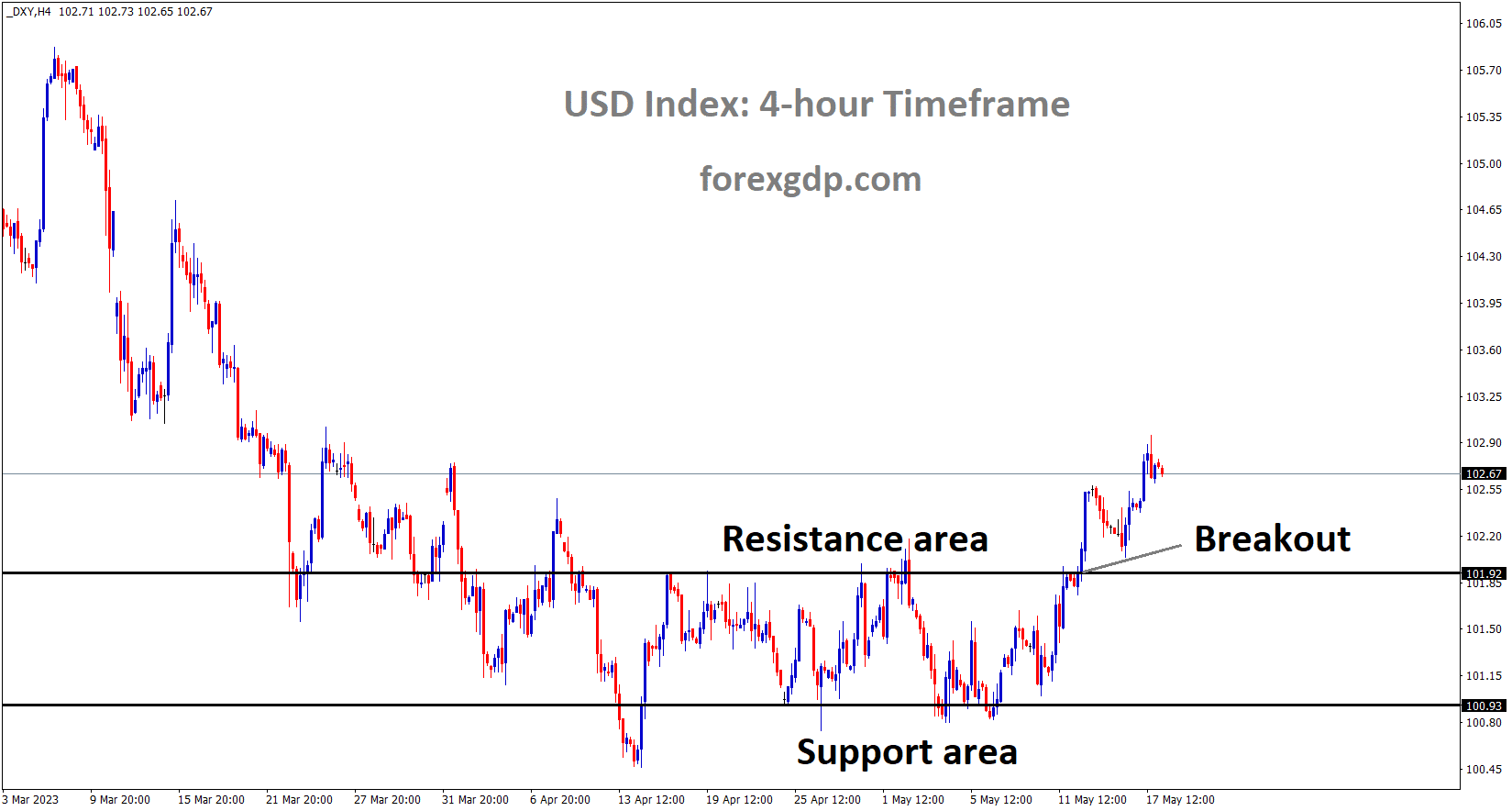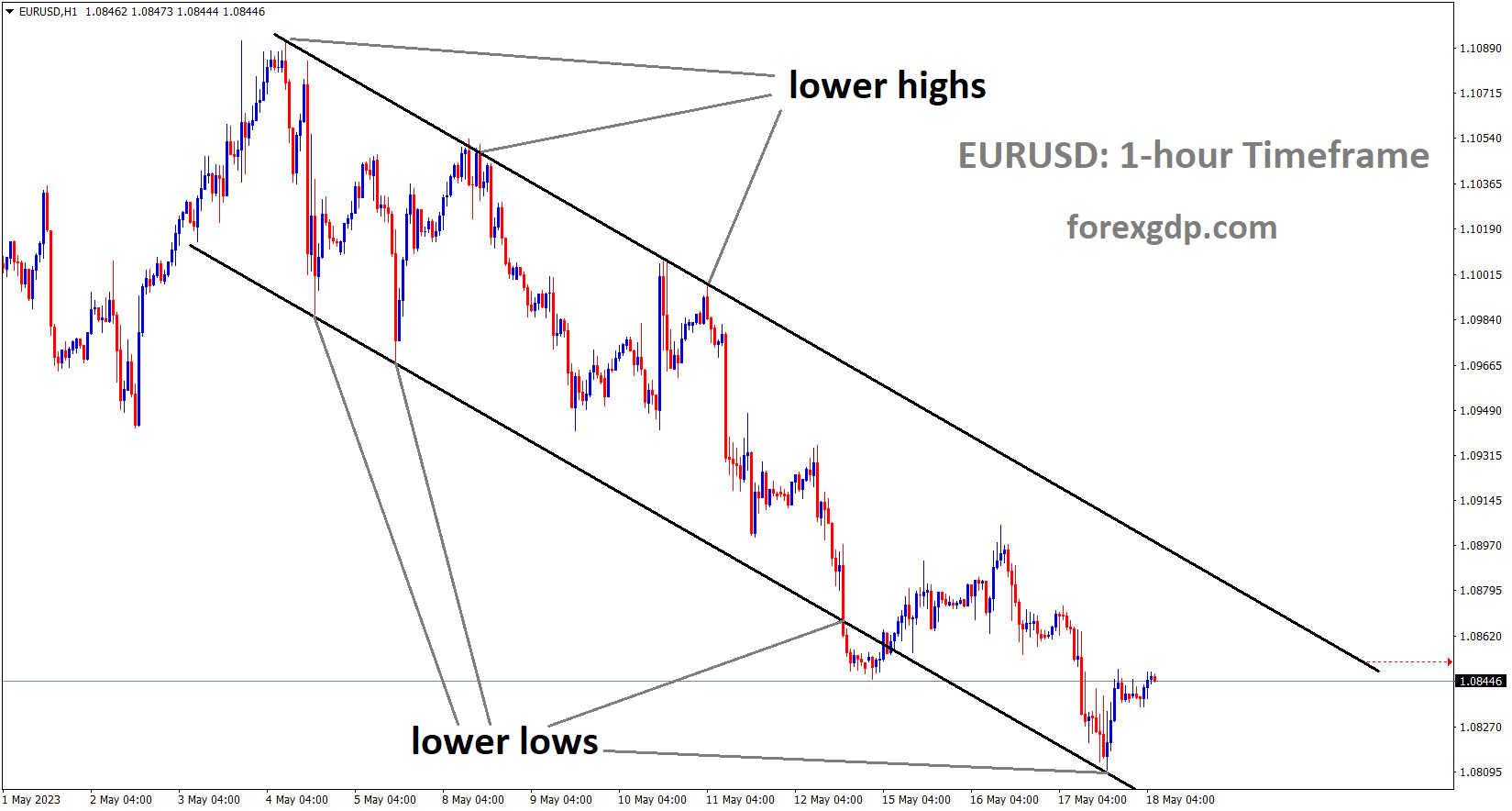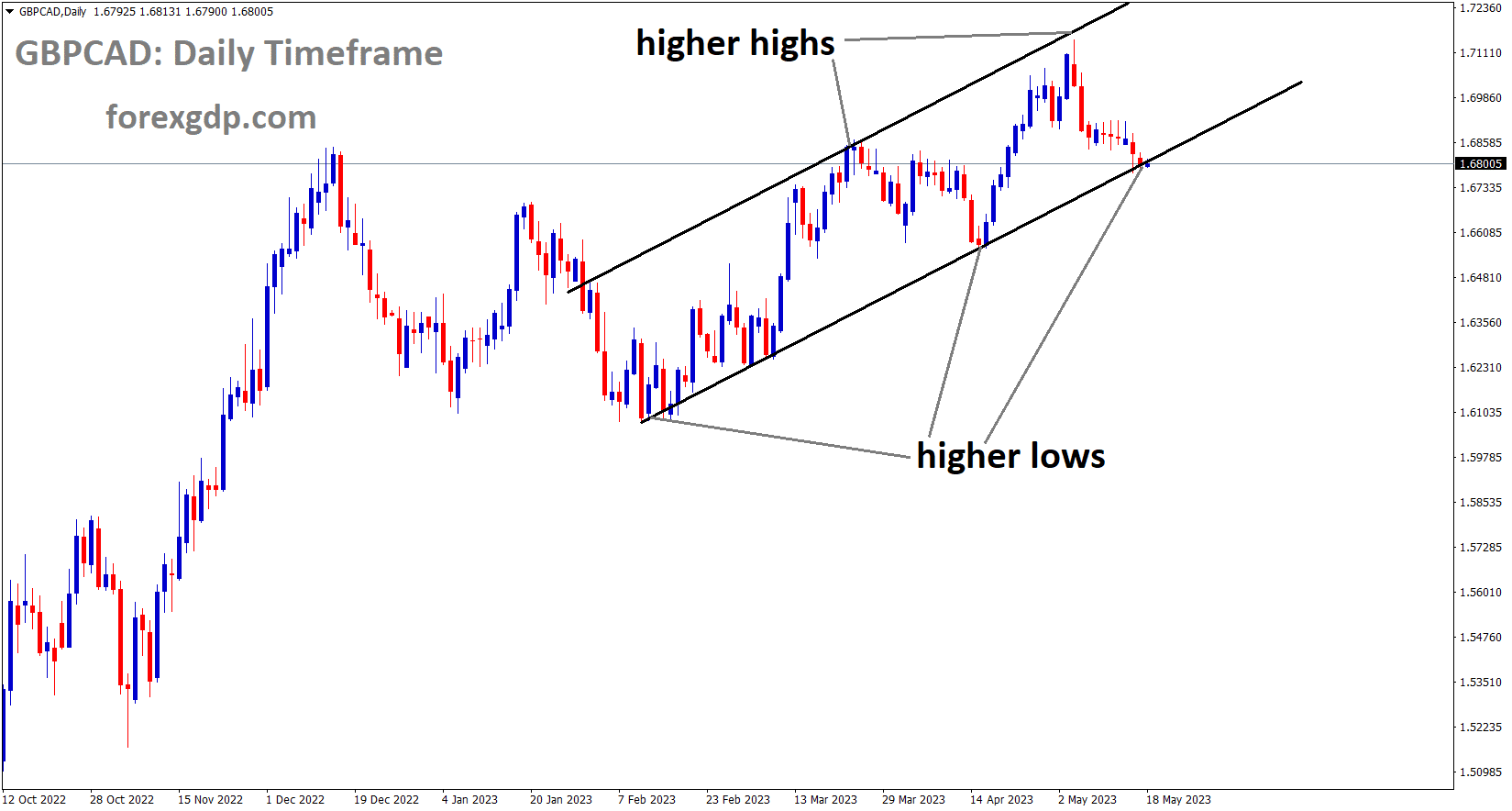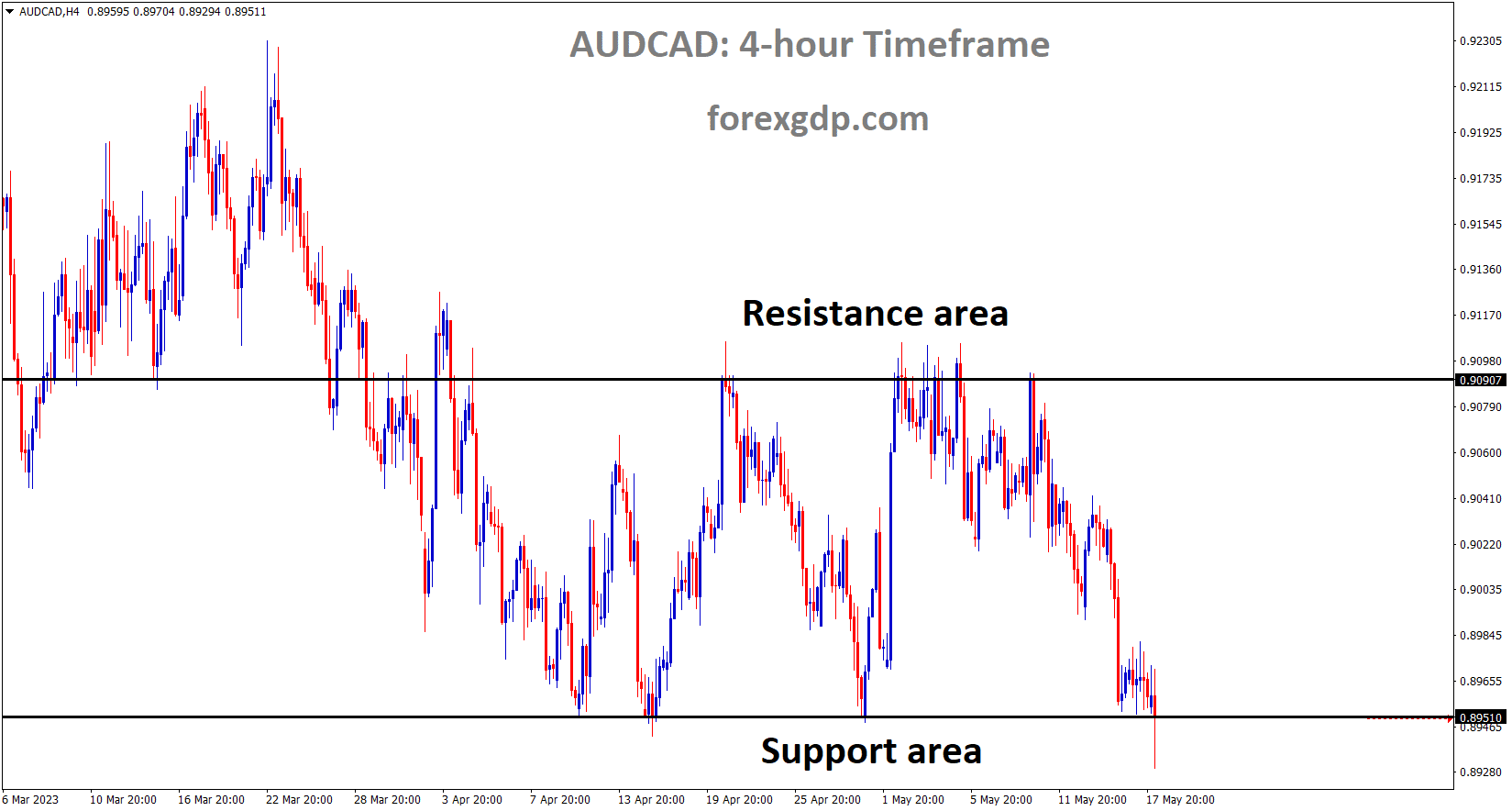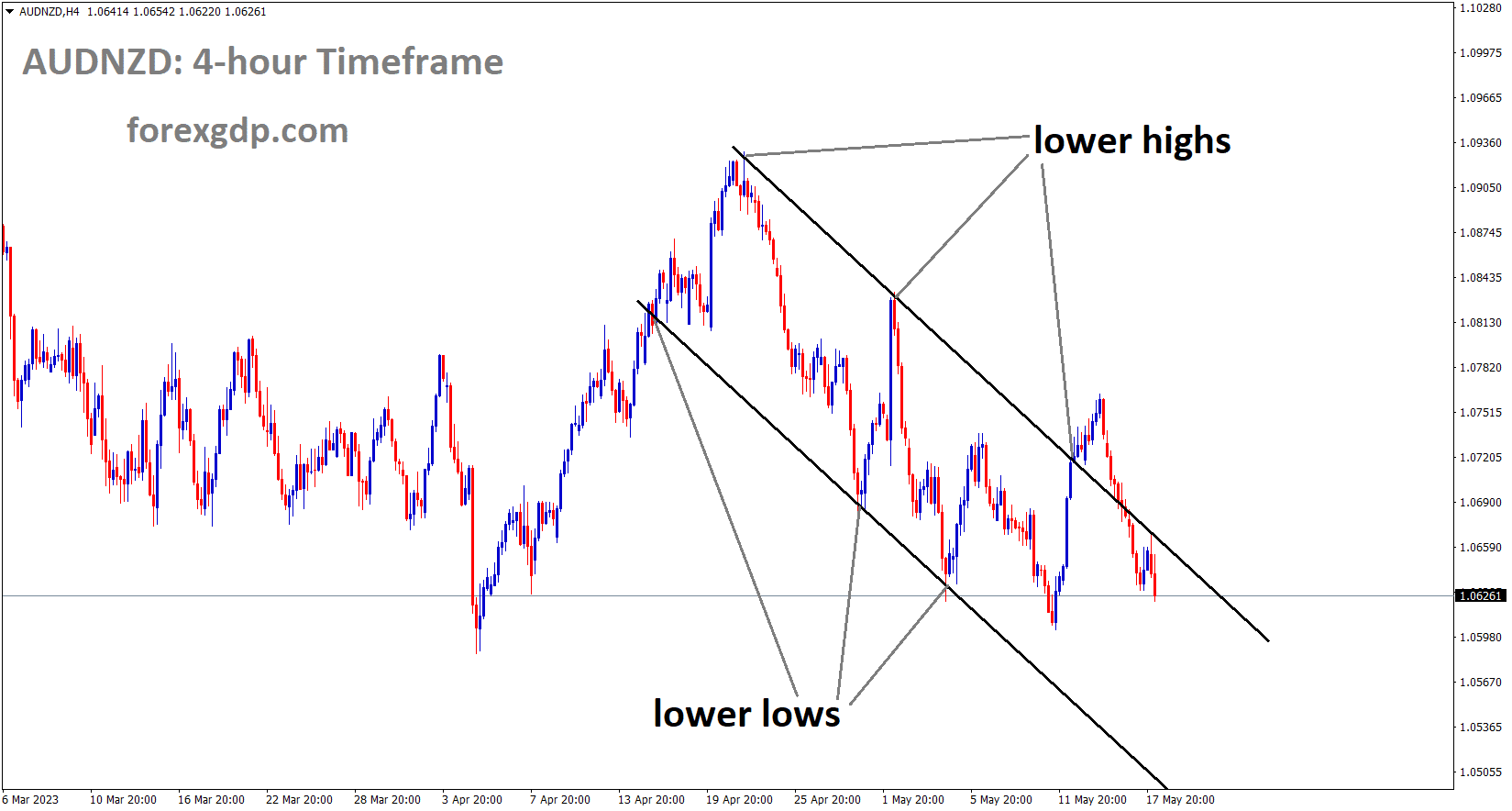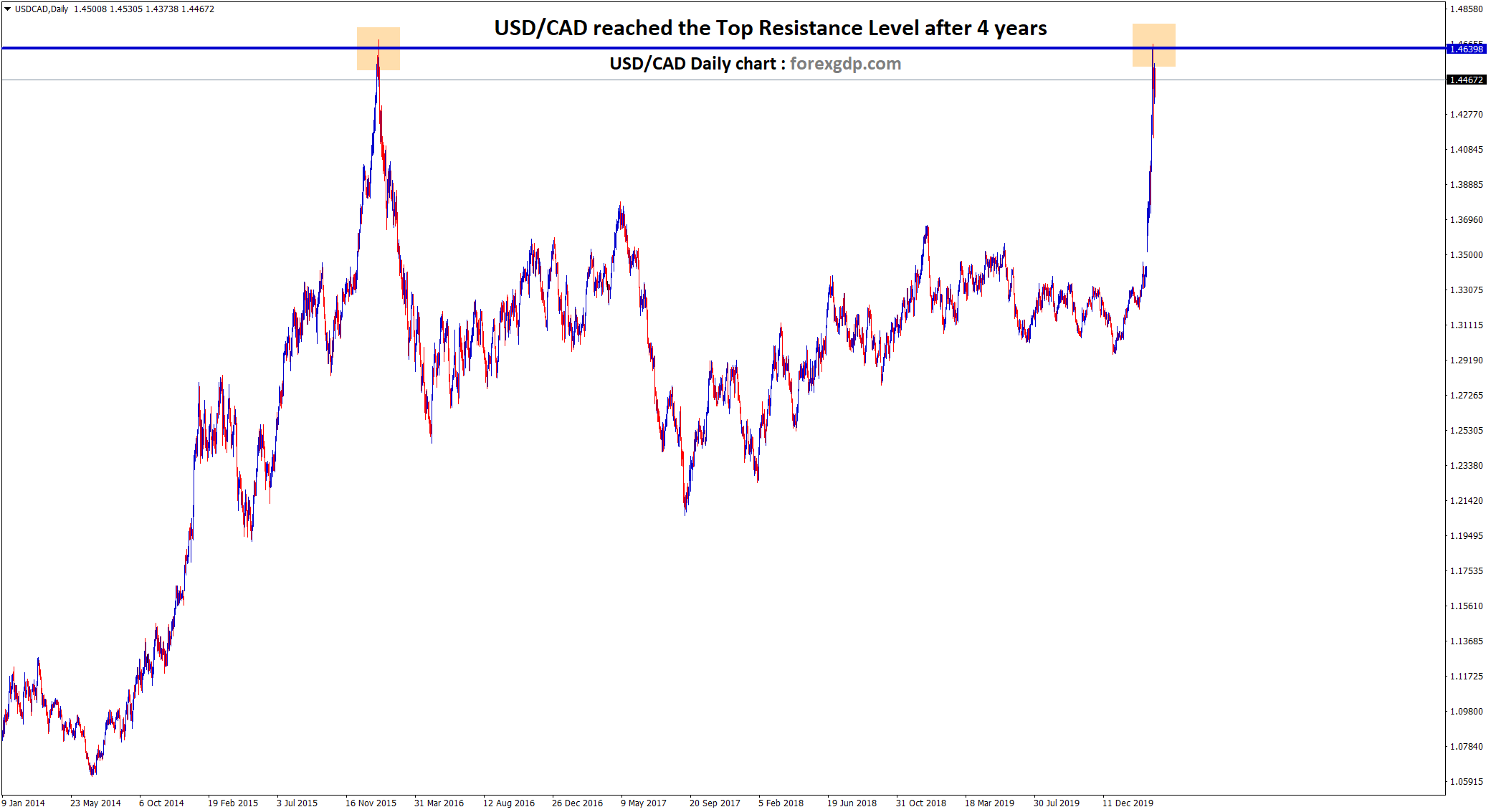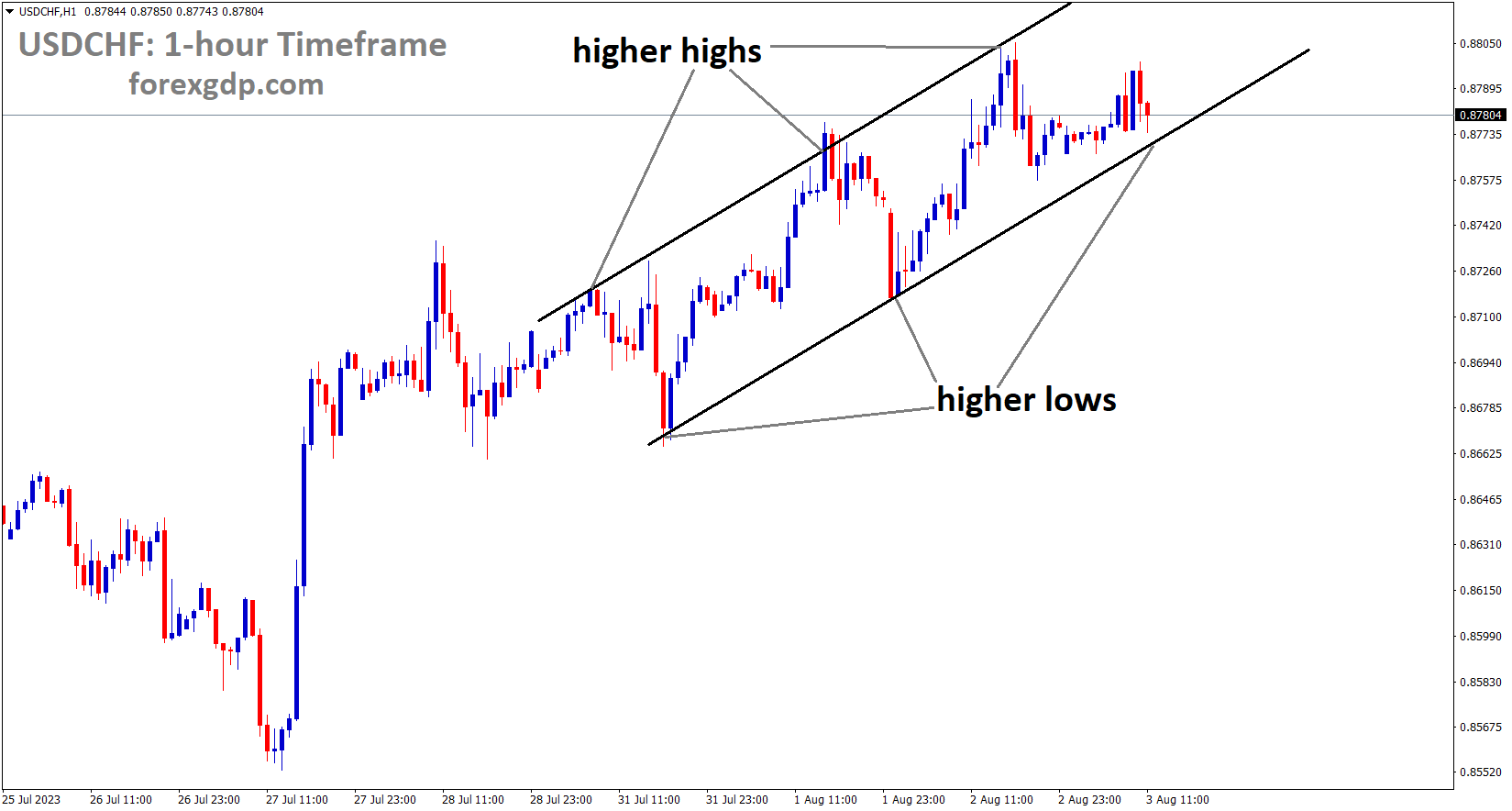GOLD Analysis
XAUUSD Gold price is moving in the Descending channel and the market has reached the lower low area of the channel.
Following the announcement that the US Debt ceiling limit will be positive and optimism over avoiding a US Default on June 1st, gold markets are down against the US Dollar. The movement of gold relative to the US dollar will be determined by today’s initial jobless claims data.
On Thursday, gold prices declined, continuing a recent run of declines for the yellow metal. For XAUUSD, this week is looking to be a 1.45% decline. This would be the worst 5-day stretch since the end of February, if confirmed. Let us take a closer look at what is occurring and what the future may hold. An anti-fiat trading asset is gold. Its peak has been almost perfectly correlated with a low in the yield on the 2-year Treasury. Since finding support earlier this month, the latter has increased by almost 10%. The US Dollar has been on the rise for the past few weeks as well.
SILVER Analysis
XAGUSD Silver price is moving in an Ascending channel and the market has fallen from the higher high area of the channel.
Short version: Bets on a near-term Fed rate cut have been doomed by recent economic reports from the US. Over the past 24 hours, financial markets appeared to be encouraged by the possibility that a bipartisan effort in Washington to raise the US debt ceiling and prevent default would succeed. In light of this, gold may be exposed over the next 24 hours if the positive outlook for the financial markets holds. Then, all eyes will be on Thursday’s US report on initial jobless claims. This is some of the most current information available regarding the state of the US labour market in the face of rising interest rates.
USDJPY Analysis
USDJPY is moving in an Ascending triangle pattern and the market has reached the resistance area of the pattern.
To keep inflation high, the Bank of Japan maintains an ultra-dovish monetary policy.
The Bank of Japan was expected to maintain its ultra-dovish monetary policy in the coming months if inflation came in lower than expected, which was expected to be 2.5% this Friday compared to the previous reading of 3.2%.
The USDJPY pair is gaining momentum as it prepares to print a new five-month high above 138.00 in the Asian session. The asset has tremendous strength because it is anticipated that the Bank of Japan will maintain a monetary policy that is loose enough to support elevated inflationary pressures. In the Asian session, S&P500 futures have generated marginal losses. Investors’ optimism that the White House and Republican leaders would reach an agreement to raise the US debt ceiling caused US stocks to soar on Wednesday. Fears of catastrophic consequences from a US Treasury default on increasing its required payments have diminished as a result of this. The general market mood has improved due to a promising agreement to raise the US borrowing ceiling. However, the budgetary spending initiatives that have been compromised in order to gain approval.
The US Dollar Index has recovered to close to 102.90, but the Federal Reserve is anticipated to halt its rate-hiking rampage, favouring the downside. In the meantime, anticipation for Friday’s scheduled release of Japan’s inflation data is expected to keep the Japanese Yen on edge. A lot of attention will be paid to the April National Consumer Price Index data for Japan. From the previous release of 3.2%, headline CPI is seen easing to 2.5%. Additionally, the core inflation rate is predicted to slow down from the previous 3.8% to 3.4%. The Bank of Japan will have to maintain its ultra-dovish interest rate policy as the inflation data for Japan soften. Governor of the Bank of Japan Kazuo Ueda is dedicated to maintaining inflation at or above 2%, which calls for an expansionary monetary policy.
USDCAD Analysis
USDCAD is moving in the Descending triangle pattern and the market has fallen from the lower high area of the pattern.
On Friday, data on Canadian retail sales (March) are scheduled. A contraction of 1.4% is anticipated, as opposed to the previous contraction of 0.20%. The fact that Canadian inflation was already lower than anticipated this week will encourage the Bank of Canada to keep the pausing rate in the coming meeting.
After gauging bids near 1.3440 in the early Asian session, the USDCAD pair has made an attempt to recover. The Canadian dollar’s value has increased as bids have increased for the US dollar index near 102.80. As Republican House of Representatives Joseph McCarthy announced that talks with the White House will result in a deal to raise the US borrowing limit, the USD index earlier experienced selling pressure after failing to sustain above the crucial resistance of 103.00. The S&P 500 ended Wednesday’s session on a positive note amid optimism that the US Treasury will be granted a rise in the debt ceiling and be able to make all of its required bill payments on time. A pause in the policy-tightening process is also anticipated, as regional banks have been less willing to extend credit to small businesses as a result of the Federal Reserve’s (Fed) strict credit standards. The labour market is getting better overall, and businesses are not using all of their potential because working capital credit is less available.
To prevent the Federal Government from missing its payment obligations, US delegates must approve raising the US debt ceiling; however, spending plans will undoubtedly advance despite this. Demand for US Treasury bonds has decreased due to rising expectations that the US debt ceiling will be increased. The 10-year US Treasury yields have increased to above 3.57% as a result of this. After seeing some persistence in inflationary figures on the Canadian Dollar front, investors are now looking forward to Friday’s Retail Sales data. Data on monthly retail sales show a decline of 1.4% versus a previous decline of 0.2%. A decrease in household demand would mitigate the effects of an increase in inflation, allowing the Bank of Canada to maintain its interest rate policy stability going forward.
USDCHF Analysis
USDCHF is moving in the Box pattern and the market has reached the resistance area of the pattern.
According to a statement from Switzerland’s upper house of parliament, the Parliamentary Commission will look into the collapse of CreditSuisse and UBS’s takeover.
Due to Swiss politicians’ and the public’s delays, the merger of UBS and Credit Suisse is expected to weaken the Swiss Franc.
A parliamentary commission will look into Credit Suisse’s demise and UBS’s acquisition of the company, Swiss media reported on Wednesday, citing the upper house of parliament of Switzerland. According to Swiss broadcaster SRF, the Council of States, Switzerland’s upper house, has endorsed the creation of a parliamentary commission of inquiry. Requests for comment from the Swiss parliament were not immediately answered.
USD Index Analysis
USD index has broken the Box pattern in upside.
In order to prevent a US default by June 1st, US President Joe Biden stated on Wednesday that the US Government will come to a budget agreement this week.
On Sunday, we will hold a news conference to discuss the debt situation. US negotiations will soon present a favourable case for raising the US debt ceiling. We sincerely hope that the US government will not go into default this month.
According to Reuters, US President Joe Biden stated on Wednesday that he is confident they will be able to come to a budget agreement and noted that it would be disastrous if the US failed to pay its bills. There is no other choice, so we must band together. The budget’s general format is the subject of this negotiation. All of the leaders concur that we will not default. On Tuesday night, a group of negotiators met; they will do so again on Wednesday. During the trip, be in constant communication with the negotiators. We will keep talking until we come to a consensus. On Sunday, there will be a news conference about the debt issue. refuse to accept work requirements that will impact peoples medical needs. It is possible that there will be some work requirements.
Global markets turned upbeat following the brief meeting between US President Joe Biden and US House Speaker Kevin McCarthy, according to US White House Speaker Kevin McCarthy.
Following the optimism regarding the US Debt Ceiling issue, the US Dollar increased on Wednesday.
US housing starts were lower than anticipated, and building permits were lower than anticipated yesterday, which is not good for the US dollar.
Early on Thursday in Asia, US Dollar Index buyers struggle to maintain control at the highest levels in seven weeks. The greenback’s index against the six major currencies, however, continues to grind along at about 102.90, reversing late Wednesday’s pullback from a multi-day high. Prior to reaching its nearly two-month high, the DXY benefited from hawkish remarks from Federal Reserve officials as well as optimism regarding a US default. However, recent concerns about the policymakers’ capacity to reach consensus on a wide range of details as well as worries about slowing US retail sales appear to be driving up interest in the US Dollar Index. Following a brief meeting between US President Joe Biden and House Speaker Kevin McCarthy, which signalled that the decision-makers are willing to compromise for a greater good, the mood of the world markets improved. US House Speaker Kevin McCarthy stated the following in an interview with CNBC while portraying the same: “Now we have an opportunity to find common ground but only a few days to get the job done.” Additionally, according to Reuters, US President Joe Biden expressed his confidence that the two sides can come to a budget agreement and noted the dire consequences of US failure to make payments. US President Joe Biden continued, “Will hold a news conference on Sunday to discuss the debt issue.
However, time is running out, and the US Treasury Department has already warned that the debt ceiling will expire in early June and warned of a “catastrophic” US default if decision-makers fail to reach an agreement on a number of issues that can help resolve the debt-limit issue. As a result, markets evaluate their earlier optimism and nudge the DXY bulls. However, Reuters reported that despite higher prices, US retail sales have held steady. However, consumers have been cautious with their spending, hurting businesses like Target and Home Depot, whose inventory is largely made up of discretionary items. Prior to this, positive US data allowed Federal Reserve officials to reaffirm their hawkish monetary policy bias. US housing starts for April came in at 1.401 million, below the 1.4 million forecast and the 1.371 million prior (revised) figures, which were released on Wednesday. In contrast, compared to revised earlier readings and market expectations, the number of building permits for the aforementioned month decreased to 1.416M from 1.437M. Prior to that, positive April US Retail Sales and Industrial Production data allowed Federal Reserve (Fed) officials to maintain their hawkish stance and encourage the risk-on attitude. Austan Goolsbee, president of the Federal Reserve Bank of Chicago, and Raphael Bostic, president of the Atlanta Federal Reserve, were the most recent among them to reiterate inflation concerns and support the bulls of the US Dollar Index.
Despite the positive Wall Street close and these plays, the S&P 500 Futures print slight losses, and US Treasury bond yields continue to trade at a multi-day high.As a result, the DXY may struggle to extend the most recent run-up in the face of a light calendar. But the secret to keeping an eye out for clear directions is risk catalysts.
EURUSD Analysis
EURUSD is moving in the Descending channel and the market has rebounded from the lower low area of the channel.
Inflation in the Euro Area came in at slightly higher-than-anticipated levels in April, with the Euro CPI MoM (APR) coming in at 7.0% versus 6.9% and the core CPI data coming in at slightly lower-than-anticipated levels.
The rest of the world looks forward to China’s import and export orders more than most other trading partners do, and China’s recovery from COVID-19 may help the EU currency from falling.
The finalised data for April showed a slight increase in the headline print compared to April of last year, demonstrating once again how stubbornly high inflation is in the euro area. The core print, which excludes items with more erratic price swings, such as food and fuel, fell from 5.7% to 5.6%, indicating hardly any improvement. Nevertheless, month-over-month inflation was improving, showing 0.6% price growth compared to the previous 0.9%, suggesting that the rate of price increases may be slowing. Additionally, this week’s hawkish Fed remarks were in response to Americans’ hotter long-term inflation expectations, which were discovered in a consumer sentiment survey conducted by the University of Michigan. Macroeconomic data, however, are likely to be mixed because certain sectors of the economy, like services, are performing well while manufacturing appears to be weak, as shown by much weaker manufacturing data from the east coast of America.
The positive economic impact that the reopening was anticipated to have on the rest of the world has also been called into question by weak import and export data from China as well as inflation figures. China is a significant trading partner for the EU, and recent signs of weakness affect the currency. Watch out for more hawkish remarks from ECB officials throughout the day as they are likely to maintain the position that additional tightening is still necessary. Given the recent bearish move, this may not have much of an impact, but it may help to taper the selloff.
GBPCAD Analysis
GBPCAD is moving in an Ascending channel and the market has reached the higher low area of the channel.
At a conference hosted by the British Chamber of Commerce, Bank of England Governor Bailey predicted that the UK’s April inflation figures, which will be released on May 24, will show a decline due to lower energy and food prices. According to MPR’s forecast, which was released last week, the UK economy will grow normally and favourably in 2023, while unemployment will rise less sharply.
BoE Governor Andrew Bailey predicts that UK inflation will ‘fall sharply’ over the coming months, beginning with the April number as high energy prices start to be factored out of the yearly calculations. In a speech at the annual British Chamber of Commerce Conference, Mr. Bailey also predicted that food inflation would decline, though his prediction of when this would happen was less certain. While pleased with the direction of inflation, Governor Bailey added that the UK central bank is still fully committed to bringing it down to the 2% target and will not hesitate to raise interest rates further if necessary. Having said all that, Mr. Bailey continued, “Things are looking a little brighter than they did a couple of months ago.” Last November, when the MPC released its Monetary Policy Report, we anticipated a brief but protracted recession in the UK economy. We are now predicting modest but positive growth and a much smaller increase in unemployment in the most recent MPR, which was published last week.
AUDCAD Analysis
AUDCAD is moving in the Box pattern and the market has reached the horizontal support area of the pattern.
Australian employment data came in at 4.3K printed versus 25K estimated, which is lower than expected. From the previous release of 3.5% in data for the month of April, the unemployment rate increased to 3.7%.
RBA pauses rate hike in June monetary policy meeting due to hot jobs data in the Australian economy.
The Australian Bureau of Statistics released Employment data, While the general public was expecting new job additions of 25K, the Australian labour market saw a 4.3K decline in payrolls in April. Compared to the consensus and the previous release of 3.5%, the unemployment rate has increased significantly to 3.7%. The Australian Bureau of Statistics released Q1 wage price index data on Wednesday. Although it was less than the estimate of 0.9%, the quarterly labour cost index remained stable at 0.8%. In comparison to the previous release of 3.3% and the consensus estimate of 3.6%, the economic data increased to 3.7% on an annual basis. The Reserve Bank of Australia may decide to hold off on additional rate increases in June as the Australian labour market is releasing significant heat.
AUDNZD Analysis
AUDNZD is moving in the Descending channel and the market has fallen from the lower high area of the channel.
Input and output numbers for New Zealand’s first quarter of the PPI index show 0.20% and 0.30%, respectively, compared to 0.50% and 0.90% previously. The New Zealand budget will be released today, and there will not be another one this month because the country’s economy is already well-capable of handling liquidity. Only the New Zealand Dollar benefits from it.
As it posts its first daily gains in three days ahead of Thursday’s publication of the crucial Australian employment report and the annual budget for New Zealand, the AUDNZD reaffirms its intraday high near 1.0670. The exotic pair’s most recent recovery from a 1.5-month-old ascending support line may be related to the market’s circumspect optimism as well as unfavourable inflationary cues from New Zealand. Despite this, New Zealand’s first quarter Producer Price Index Input and Output numbers decreased from the prior quarter’s 0.5% and 0.9% to 0.2% and 0.3%, respectively. It is important to note that these numbers fall far short of market expectations for input and output, which were 1.5% and 1.3%, respectively. The most recent hopes that US policymakers will be able to prevent the “catastrophic” default may be supporting the pair’s recovery efforts. Markets may be sceptical of a quick meeting between US President Joe Biden and House Speaker Kevin McCarthy, but statements from both important diplomats fuel optimism that the US debt ceiling will not be reached. In an interview with CNBC on Wednesday, US House Speaker Kevin McCarthy said, “Now we have an opportunity to find common ground but only a few days to get the job done.” Additionally, according to Reuters, US President Joe Biden expressed his confidence that the two sides can come to a budget agreement and noted the dire consequences of US failure to make payments. US President Joe Biden continued, “Will hold a news conference on Sunday to discuss the debt issue.
As China’s State Planner National Development and Reform Commission of the People’s Republic of China mentioned on Wednesday that it will take measures to unleash consumption potential and to make continuous efforts in stabilising and expanding manufacturing investment, hopes for more Chinese investment also supported the AUDNZD recovery alongside the US-inspired run-up. Wall Street closed higher while Treasury bond yields remained firmer at a two-week high, illustrating the risk-on scenario. Moving on, traders who are interested in the AUDNZD pair should pay close attention to the Australia Employment data for April, as the headline Employment Change is forecast to decline to 25K from 53K previously, while the Unemployment Rate and Participation Rate may remain unchanged at 3.5% and 66.7%, respectively. The RBA will find it difficult to defend the latest hawkish surprise should the data confirm pessimistic predictions or show a further easing of the jobs market, which can weigh on the exchange rate. In order to benefit New Zealand Dollar buyers, the no frills budget also needs to be approved by bond markets and rating agencies. In light of this, ANZ stated, Despite the budget’s no frills reputation prior to its release, we anticipate it will provide some additional stimulus to an already capacity-constrained economy.
Don’t trade all the time, trade forex only at the confirmed trade setups.
Get Live Free Signals now: forexgdp.com/forex-signals/

